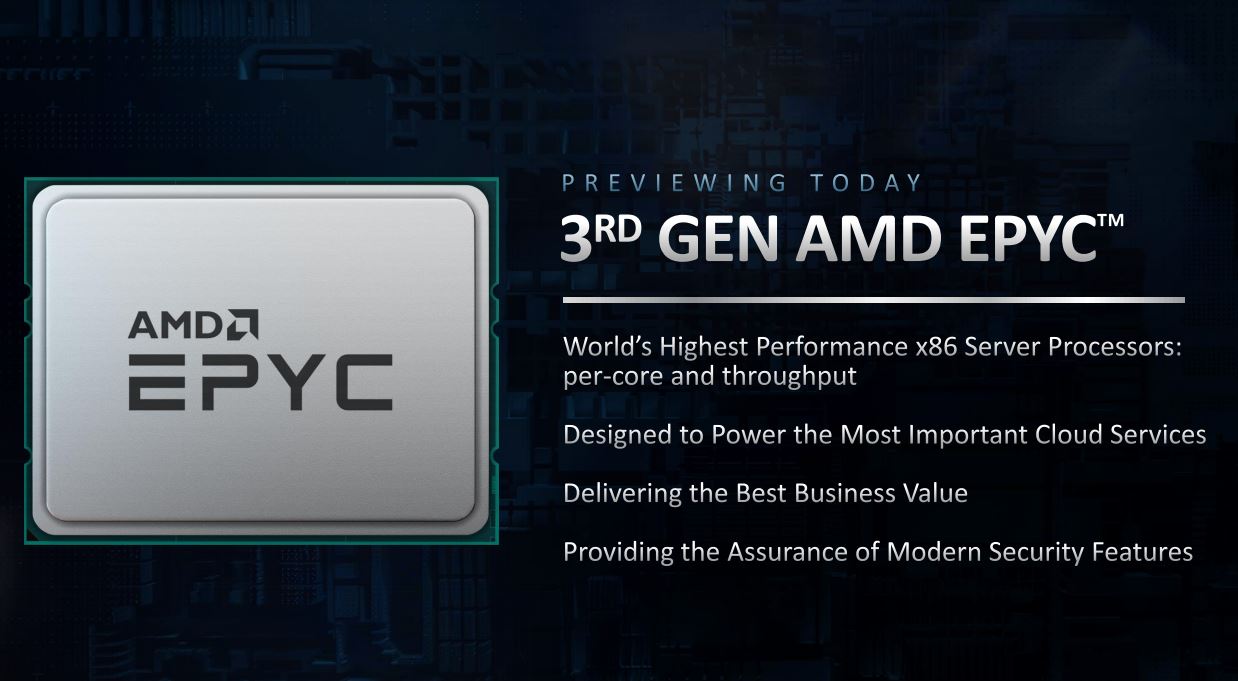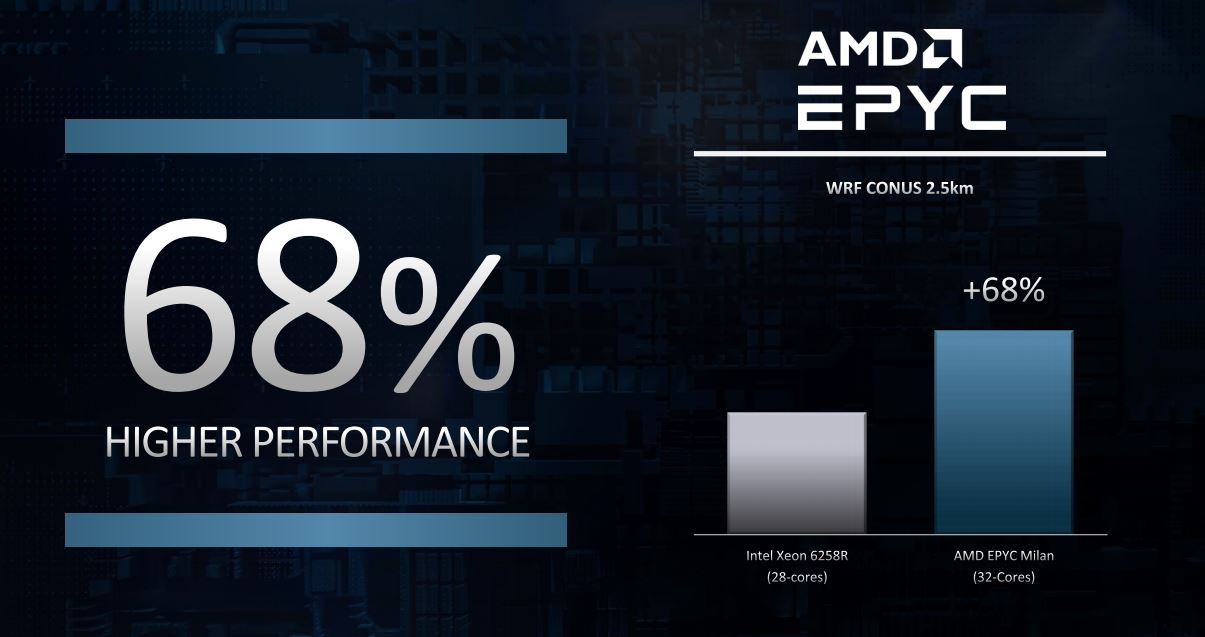During the AMD keynote at CES 2021, the company gave an update on its next-generation of server processors. This is the AMD EPYC 7003 “Milan” generation that is due out for general availability in 2021, and more specifically, in the next few months.
AMD EPYC 7003 Milan Update at CES 2021
Although CES is generally a consumer-focused event, AMD did take a few minutes out of the keynote to give an update on the next-gen Milan parts. AMD did not share any new technical details but did show off a new benchmark.

AMD is showing off a number for Milan using WRF a HPC weather simulation platform.

Here, AMD is claiming 68% higher performance over Cascade Lake Intel Xeon Gold 6258R processors at similar core counts. AMD is using a 32-core processor versus the 2020 Gold 6258R at 28 cores.

AMD is being quite selective in disclosures here. The EPYC 7002 to EPYC 7003 jump will not be as big as the EPYC 7001 to EPYC 7002 performance increase. With Naples (7001) to Rome (7002), we saw the I/O die introduction, PCIe Gen4, DDR4-3200, and doubling of core counts using a new architecture. Even without as massive of a jump, AMD will benefit from a new microarchitecture and simply having more cores. Adding even low double-digit performance gains per core, multiplied by large core counts has a huge impact. Intel Ice Lake Xeons will not match the core counts of AMD so adding more performance per core means that one gets a bigger aggregate impact than adding performance per core on the Xeon side.
Final Words
Since we see a need for industry clarity here, AMD EPYC 7003 Milan is Production Shipping status but not yet launched. AMD is shipping production silicon but has not formally launched the processors for general purchase in OEM/ODM systems without an NDA.
We decided to start introducing this status system in our recent Intel Ice Lake Xeon Now In Production piece to increase clarity in our coverage.
We had hoped we would be able to bring you the final performance by CES 2021, but the launch has migrated out a bit over the past few quarters as AMD is tracking some of Intel’s Ice Lake general availability delays and moving its Milan GA window to not be in the market too far before Ice Lake. This makes sense as it does not need Milan to show it has a bigger chip than the 2nd Generation Intel Xeon Scalable. From a competitive perspective, AMD does not need to launch Milan early. Stay tuned to STH for more on the AMD EPYC 7003 “Milan” series in the coming months on STH.





Every delay to the launch of Milan makes Genoa more interesting
Genoa is expected to be 5nm, have DDR5, and might be PCIe 5.0 (as PCIe 6.0 will barely be ready); so it’s certain to be a lot more expensive, with its new socket and redesigned motherboards along with immediate obsolescence if PCIe 6 arrives months later. Genoa interesting, yes; waiting for it, no.
I’m not a fan of the delays but the Frontier Supercomputer might have 25,600 CPUs and the Perlmutter a quarter the number of cabinets (with greater density); means not so many of the Milan CPU have been shipped, but the bins might be filling up for the rest of us (enough to accumulate a sufficient quantity to publicly release). At least they will be well tested.
I was really hoping to hear more during today’s announcement, it’s looking (feeling) like early Q2.
It may be very hard for CPU to run all PCIe lanes will full v5.0 specs. It may also be hard for MB makers to route the full amount of lanes at full speed. The compromise may be to have 16 to 24 lanes at v5.0 speed, the rest will be 4.0 speed.
The official line is “We [insert CPU manufacturers name here] don’t speculate or discuss unannounced products nor roadmaps”.
What is Trento?
@tygrus The reach and latency of PCIe 5 and 6 is similar to 4, due to changes in the spec and components.
Sources:
https://www.electronicdesign.com/industrial-automation/article/21136215/intel-whats-the-difference-going-from-pcie-30-to-pcie-60
https://www.nextplatform.com/2020/08/06/the-tech-tricks-that-make-pci-express-6-0-and-beyond-possible/
Also there is a proprietary x32 slot (SuperMicro), and the possibility of utilizing a mezzanine card without retimers for high speed networking.
Source: https://www.supermicro.com/en/products/motherboard/X11SDW-14C-TP13F
Such customization and higher quality components could (initially) add several hundred dollars cost to the motherboard. That matters little if you have over 100 cores and really want the fastest speeds; if you have a mid-range workstation with 16-24 cores the extra cost is (per core) 4-5x as much.
While a ‘home workstation’ would be unlikely to need networking so fast it could be nice for add-in cards (a few years from now) with DPUs, GPUs, or FPGAs that used PCIe 6.0. – My point being: PCIe 4.0 will be the end of the road for the home user for more than a couple of years; so no reason to wait for Genoa or beyond to get bus speed you can’t afford to justify.